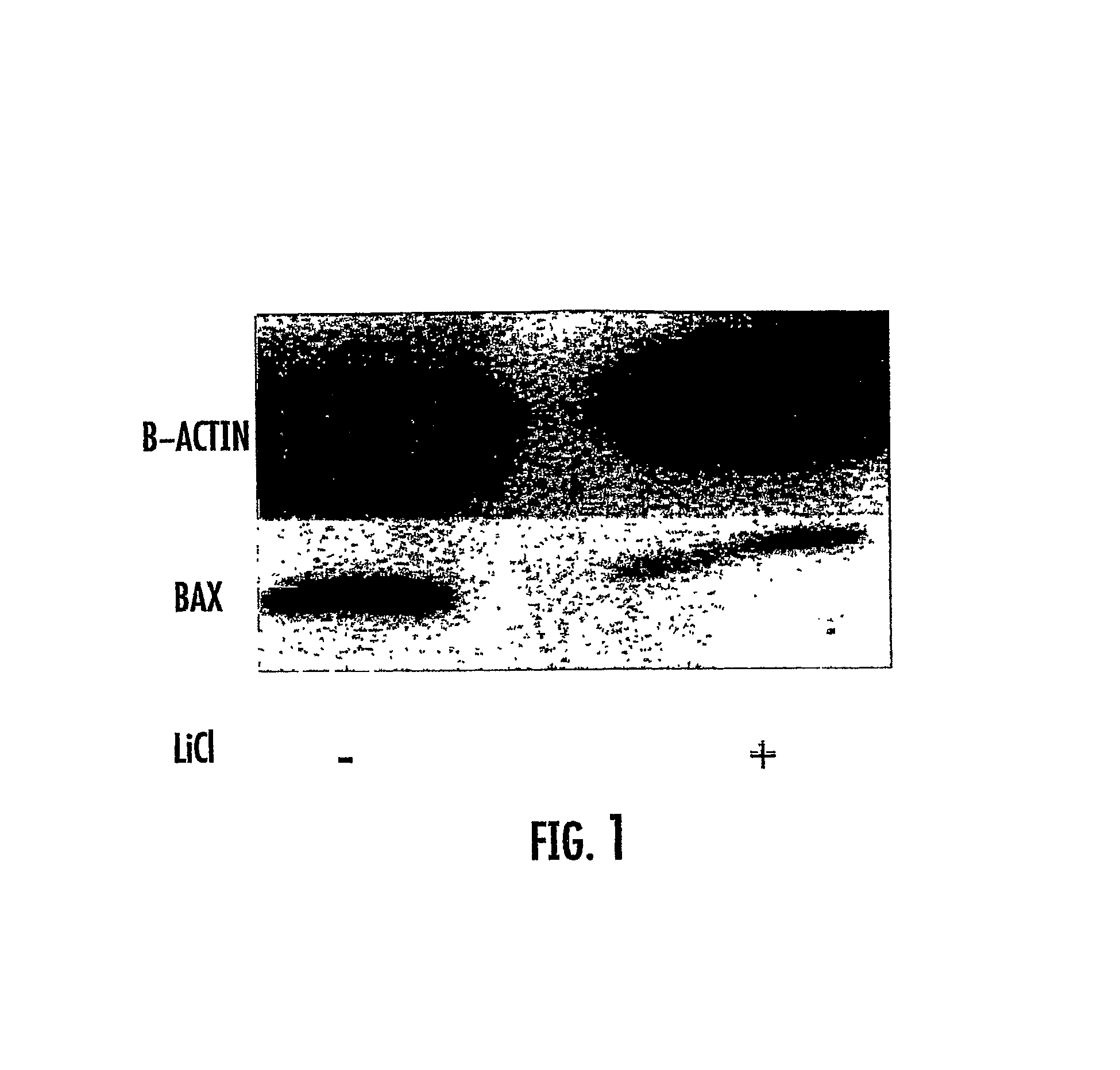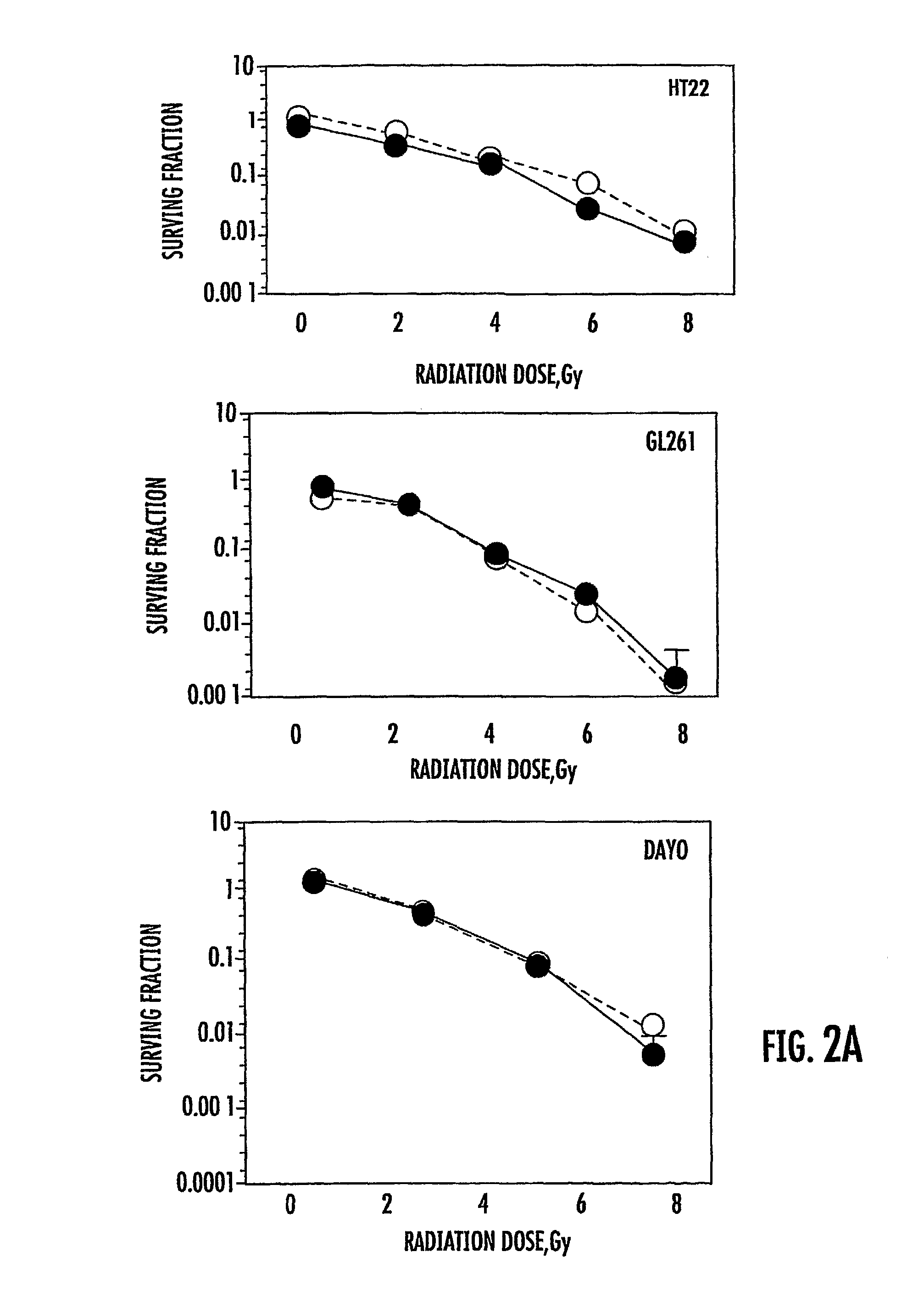Use of GSK3 inhibitors in combination with radiation therapies
a technology of gsk3 inhibitors and radiation therapies, applied in the field of molecular biology and medicine, can solve the problems of neuron death, cognitive decline, neuron death, and significant deleterious side effects, and achieve the effects of reducing the number of patients
- Summary
- Abstract
- Description
- Claims
- Application Information
AI Technical Summary
Benefits of technology
Problems solved by technology
Method used
Image
Examples
examples
[0154]The following Examples have been included to illustrate modes of the presently disclosed subject matter. In light of the present disclosure and the general level of skill in the art, those of skill will appreciate that the following Examples are intended to be exemplary only and that numerous changes, modifications, and alterations can be employed without departing from the scope of the presently disclosed subject matter.
examples 1-7
Introduction To Examples 1-7
GSK3 Inhibitors Can Exert Radioprotective Effects on the Brain
[0155]Cranial radiation therapy is currently used for the treatment of both primary and metastatic brain tumors, as well as CNS involvement of leukemia and lymphoma. However, this treatment carries with it long term cognitive defects, especially in young children (Meadows et al., 1981; Robison et al., 1984; Silverman et al., 1984; Jannoun and Bloom, 1990), which is associated with increased unemployment in adulthood (Pui et al., 2003).
[0156]While the pathogenesis of this phenomenon is unclear, evidence suggests that it might involve radiation-induced damage to proliferating neuronal progenitor cells in the subgranular zone (SGZ) of the hippocampus (Mizumatsu et al., 2003; Ferrer et al., 1993; Peissner et al., 1999; Nagai et al., 2000). Relatively small doses of radiation have been shown to cause significant apoptosis in the subgranular zone (SGZ) of young rats and mice, as demonstrated by cellu...
example 1
Chronic Lithium Decreases Bax Levels In Vitro
[0169]Bax is a pro-apoptotic signaling molecule that dimerizes with bcl-2 (Oltvai et al., 1993) and directly regulates release of cytochrome c from the mitochondria (Jurgensmeier et al., 1998). In addition, Bax has been shown to be necessary for radiation-induced apoptosis in the hippocampus (Chong et al., 2000). To see if lithium treatment decreases expression of Bax in vitro, protein was extracted from treated and untreated HT-22 cells. Western immunoblotting with antibody specific for Bax is shown in FIG. 1. 7 days of 3 mM LiCl treatment significantly reduced expression of Bax in HT-22. However, it was also determined that radiation did not induce expression of Bax in HT-22 at 6, 12, or 24 hours.
PUM
| Property | Measurement | Unit |
|---|---|---|
| temperature | aaaaa | aaaaa |
| temperature | aaaaa | aaaaa |
| depth | aaaaa | aaaaa |
Abstract
Description
Claims
Application Information
 Login to View More
Login to View More - R&D
- Intellectual Property
- Life Sciences
- Materials
- Tech Scout
- Unparalleled Data Quality
- Higher Quality Content
- 60% Fewer Hallucinations
Browse by: Latest US Patents, China's latest patents, Technical Efficacy Thesaurus, Application Domain, Technology Topic, Popular Technical Reports.
© 2025 PatSnap. All rights reserved.Legal|Privacy policy|Modern Slavery Act Transparency Statement|Sitemap|About US| Contact US: help@patsnap.com



